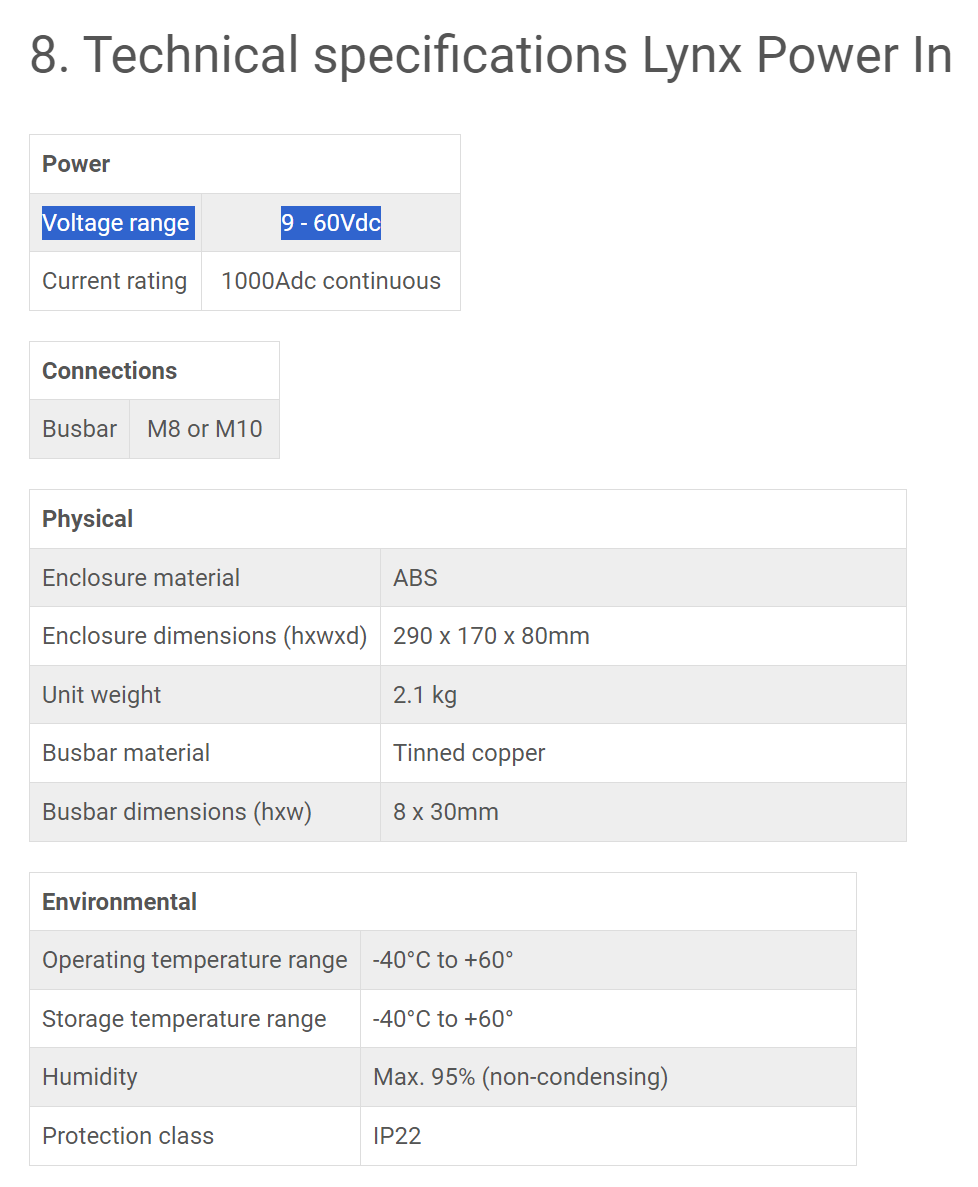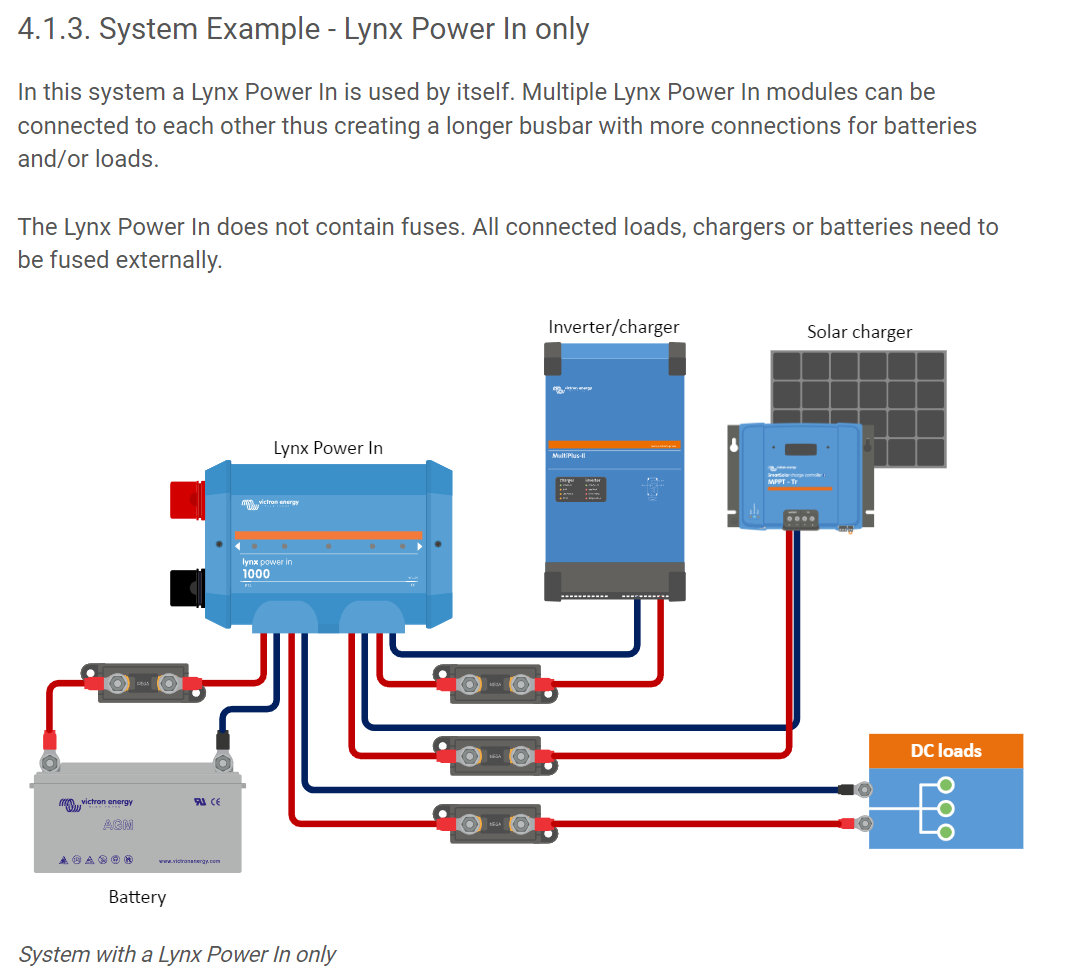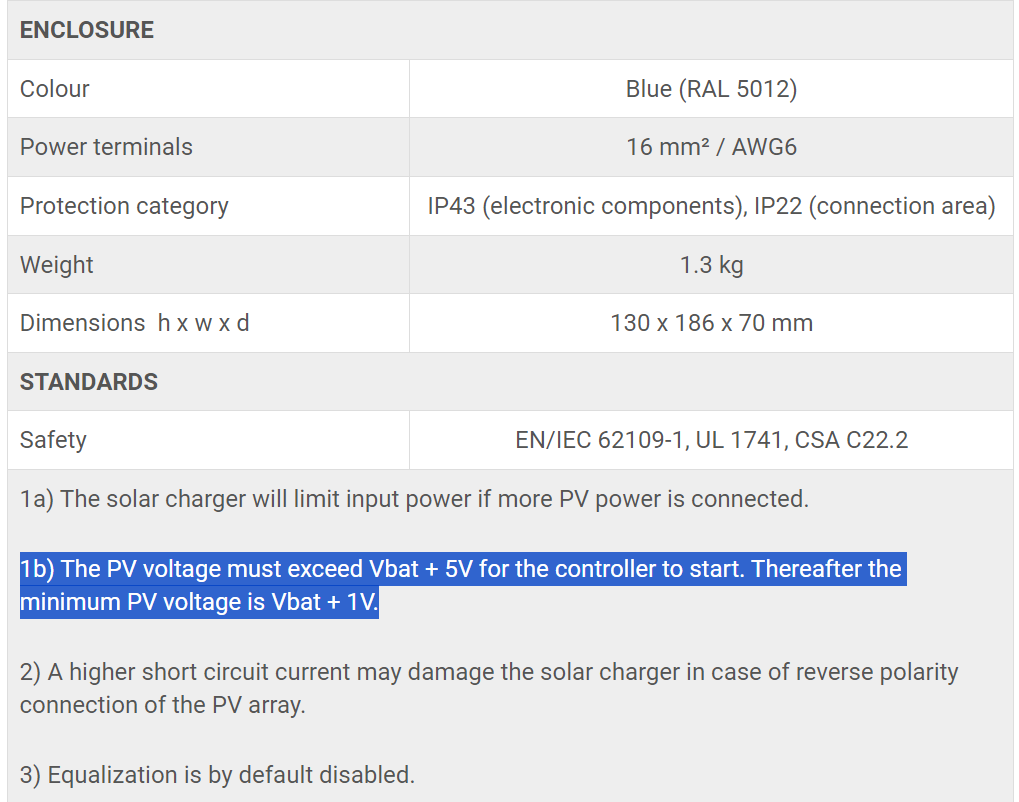Hello all
I am wanting to implement the Lynx Power-in into my 51V battery bank (2x 100Ah), as well as into an MPPT for near future solar. Currently I have both batteries running in parallel through a single 125A NH00 gBat fuse & 50mm2 cables, into my 3kVA MP-II.
I am aware this isn't optimal, as each should rather run through their own 125A fuse, before combining back at the Lynx, which is where my below research starts.
I have recently watched many videos on arcing and how severe it can become, so it's my main priority to avoid this. Am also aware that only the internal POS & NEG terminals of the Lynx should be used for battery terminals, and not the external two mounting holes on the left side, (which are designed for connecting to another Lynx). Rubber caps on to avoid anything making a connection between them and causing an arc.
I looked at the VDC of the Lynx Power-In, which as per the manual specs in Section 8 https://www.victronenergy.com/media/pg/Lynx_Power_In/en/technical-specifications-lynx-power-in.html it says:
Minimum: 9 VDC
Maximum: 60 VDC
My battery’s 54.5V is well within this, so all good thus far, but the issue comes in when you add the MPPT, with higher VDC solar into the mix.
This is because, In the same manual, in section 4.1.3 https://www.victronenergy.com/media/pg/Lynx_Power_In/en/system-design.html it shows that you can connect both your battery bank and solar arrays, which is where i am getting confused.
From what I am seeing/understanding, it's very under-specced for the high voltages that will exist, within a solar array in series, which will easily surpass the max VDC.
Because, in order to even power the MPPT, the voltage needs to be at least +5V above battery as per the MPPT manual section 9 https://www.victronenergy.com/media/pg/Manual_SmartSolar_MPPT_100-30__100-50/en/technical-specifications.html.
Given this and my battery at 54.5V at 100%, we can round this off to 60V, which is inline with the Lynx Power-In’s max 60 VDC, but what happens when I have even 3x 425W solar panels with a Voc of 38V and best case a VMPP of 32V. (Factoring in using a 150/100 MPPT to give some voltage headroom).
Even with a lower and closed circuit VMPP, 32x3 can = 96V, which is far above the Lynx max of 60V.
So am I not understanding something here, or should you not actually connect a Lynx to an MPPT, with anything more than 2x panels that fall below the 60VDC limit?
Also, wouldn't the battery VDC be added to this, increasing the total VDC even further to 96+54 = 150VDC? (EDIT: nevermind, I soon realized that the Lynx is in parallel, so V wouldnt increase)
Thanks



